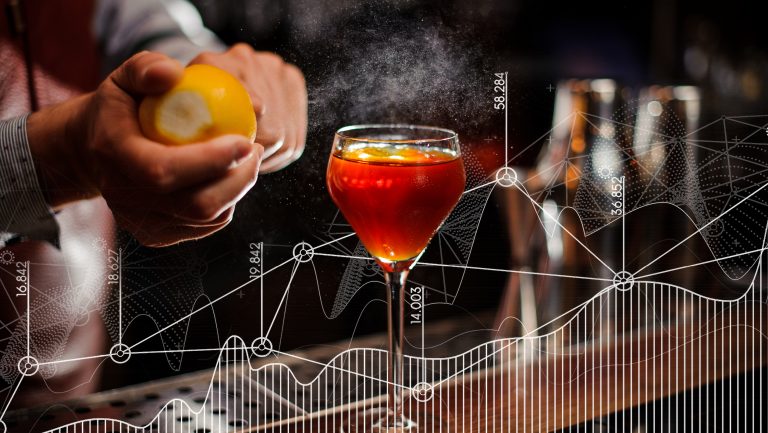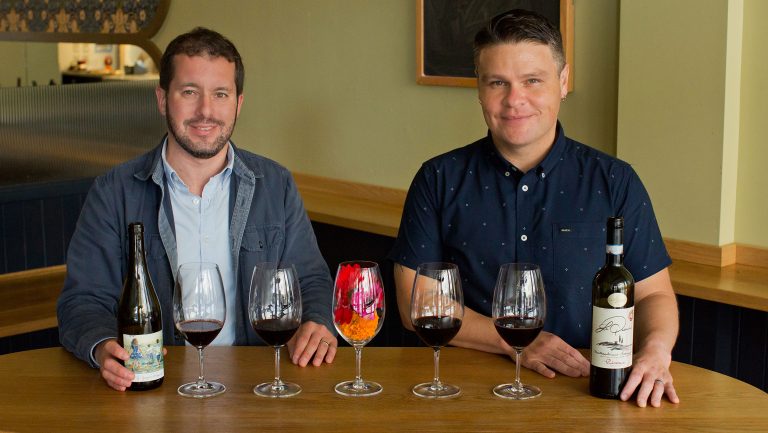“It’s very easy to throw a bunch of expensive ingredients together and make a drink seem fancy, but is that good for business?” asks Alexander Day, one of the partners in Death & Co., a popular cocktail bar located in New York City’s East Village neighborhood (and about to open a second location, in Denver). “Oftentimes, without proper planning, it’s not,” he says. “Even if you’re tightening down, eventually, what your costs look like, if you’re not developing your menu and your program holistically, with an eye toward being a responsible business owner, then you’re really risking a lot.” Death & Co. learned this lesson firsthand, working off early menus that Day says consisted of “extremely expensive” recipes, before adopting the business strategy it uses today.
The reality is that it’s easy for any bar or restaurant to find itself in a similar position these days, especially in big-city locations, like New York, where competition among bars is increasingly fierce. There is always that desire to spend lavishly to one-up a new bar or restaurant that just opened around the corner.
But, as Day suggests, beverage program managers need to strive for a healthy balance between creativity and responsibility if they are to keep their business profitable. And many are doing just that, adopting business practices that may have been shown to work for their peers, for example, or even adopting the latest technology to free up some much-needed time to tend to other areas of the business that may need some TLC.

Don’t miss the latest drinks industry news and insights. Sign up for our award-winning newsletters and get insider intel, resources, and trends delivered to your inbox every week.

Evaluating Costs
Consider, for example, The Dead Rabbit Grocery and Grog, a tri-level bar located in a building constructed in 1828 in New York City’s financial district. The bar’s beverage director, Jillian Vose; its founders, Jack McGarry and Sean Muldoon; and the bar’s management team pride themselves on running a very tight ship. But they recently turned to a software program called Bevager for some help in keeping track of inventory, and costing recipes and drinks in real time. “It’s worth getting to the point where you’re really seeing what you’re selling,” explains Vose. “Looking at your costs is the first step in understanding them so that you can improve them.”
According to Sam Zats, Bevager’s CEO, “Cost of goods represents a third of the entire cost structure, and there’s very little visibility into that third of the business without our solution.” Zats says a typical customer will see a reduction of 5 to 10 percent on pour cost, 3 to 5 percent on food cost, and usually around 30 to 50 hours in food or bar administration management.
“Services like Bevager allow us to do cocktail development on the fly while costing,” says Death & Co.’s Day. “So that when we get to the stage of looking at what this menu is really going to cost the business relative to the price we’re charging a guest, we can be assured that we’re making a good business decision.”
Many bars try to cost a cocktail so that 18 to 20 percent of its price covers the drink’s actual ingredients, with the rest supporting the other parts of the business, such as labor, food, and administration.
Paul Taylor, head of bar concepts for the bar Drink Company in Washington, D.C., strongly emphasizes how critical what he calls honest costing is to a bar’s overall profitability. “What I mean by that is, you’re costing everything,” he says. “When you’re making a drink, you’re not just costing the spirits that go into it, but you’re costing the syrups, juices, sodas, garnishes, or anything else you may include in it. When everything is priced out and accounted for, you have the true cost of the cocktail.”
Designing Functional Spaces
Some of the other ways to boost profitability are less obvious. A well-designed space, for example, can ensure both ease of use for employees and, ultimately, more contented customers. If the bar, service stations, and service paths are laid out smartly, that makes it easier on the staff and results in customers who don’t have to wait as long for their next drink—“The better your flow will be, the tighter your timing can be, and the better communication will be,” says Kevin Baird, the bar director at Grand Army Bar in Brooklyn, New York. “I recommend reducing the [number] of end-to-end trips through the space throughout the night, as well as paths crossed. You want to have a clear flow of traffic and compartmentalized stations. If these things are not laid out properly, it could hurt a lot. And it can introduce stress. It will just introduce a heightened sense of anxiety that your entire staff feels, and a thousand percent translates directly to your guests.”
Day says Death & Co. puts a lot of time and energy into designing its spaces for just this reason. “We put a lot of emphasis on infrastructure design—specifically, how we lay out a bar, the equipment we use, and the arrangement of stations,” he says, “so that it can be the most efficient possible for the business but also for the health of our employees. The ergonomics—mapping out the impact of working eight hours at a given station—will either produce a productive and happy bartender or one who is in pain at the end of the night, which of course can trickle down into less revenue for the business if an employee isn’t able to be productive for extended periods of time.”
Making the Most of Expenditures
The Dead Rabbit’s Vose also recommends investing in a bar’s infrastructure as needed. It’s easy to put a bandage on something that’s broken, or perhaps replace something cheaply, but in the long run you’ll probably end up paying more. “For instance,” Vose says, “custom steel work for us I think is kind of a cool thing—installing something that’s completely indestructible as opposed to getting things that are store bought. We have a lot of equipment behind the bars that will last a lot longer than something that’s rubber or something that’s a mesh wiring or something like that.”
When it comes to ordering products, Danny Shapiro, one of the founders of the Scofflaw Group in Chicago, recommends keeping an eye on quarterly numbers rather than weekly ones. “This will allow you to take advantage of bigger case deals without causing you to stress out about the weekly beverage costs,” he says. He also suggests negotiating deals with distributors ahead of time, especially if you expect to be going through significant volume.
Shapiro notes that some bars and restaurants feel beholden to the big brand names, which, he says, “aren’t always a better deal. In fact, most of the time, using a more recognizable name will cost more money without providing a boost in quality.” Another aspect of the business that can add up is the R&D efforts of the bar teams. “Try to make sure they’re making focused attempts at new cocktails that they’re researching,” says Shapiro, “rather than making a million test versions of the same drink. We limit attempts so that we’re not wasting a bunch of unnecessary product.”
Getting Creative
Death & Co.’s Day adds that it can be easy for a bar’s team to fall into the mind-set that so much attention to the bottom line when developing an exciting menu stifles creativity—he says he finds the opposite to be true. “When given restrictions,” he says, “we’re able to do some of our best work and find really creative solutions.”
There’s debate over how valuable things like happy hours can be to a business, especially given the ability today of social media to help bring in more guests. But there are innovative ways to structure this kind of promotion as well, says Day. For example, his bar Nitecap in New York City holds an “aperitif hour” every night between 6 and 8 pm (just after opening), where the aperitif section of the menu is discounted, to $10 a drink. Aperitifs are generally made from lower ABV ingredients (vermouths and fortified wines, low-proof amaros, and so forth) that are, generally speaking, less expensive. “Therefore,” says Day, “the business doesn’t take a hit in the same way [it does when] traditionally discounting during a happy hour.”
Vose underscores the importance of remembering that running a more profitable beverage program will always be a work in progress. “This is stuff we’re still trying to achieve,” she says. “There’s no perfect way to do anything. Try to accept that nothing’s ever going to be perfect, and to always keep improving, always keep looking for better systems and technology. Some people can be stubborn [about] it, or don’t want to budge in their ways. But it’s important to be open-minded to the possibilities of improving, and always having that mentality.”

Dispatch
Sign up for our award-winning newsletter
Don’t miss the latest drinks industry news and insights—delivered to your inbox every week.
Andrew Kaplan is a freelance writer based in New York City. He was managing editor of Beverage World magazine for 14 years and has worked for a variety of other food and beverage-related publications, and also newspapers. Follow him on Twitter at @andrewkap.







